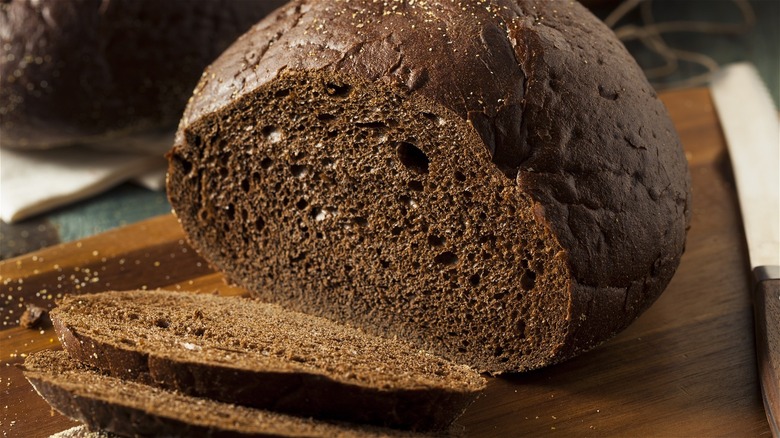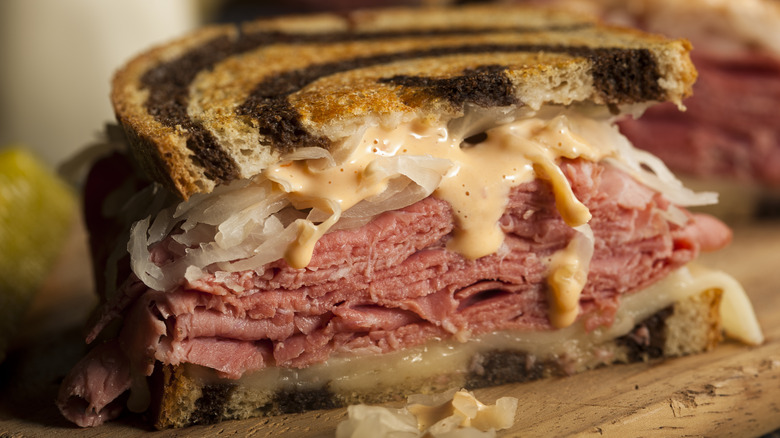US Pumpernickel Bread Has A Far Different Flavor Than In The UK
For some, sweets are irresistible. Those people need something sugary to complete a meal, and when they reach for a snack, it's cookies, chocolate, or candy that satisfy their hunger. For others, it's carbs. Salty snacks like popcorn or potato chips are good, but bread is comfort personified.
Using little more than flour, water, and yeast, there is a wide variety of bread globally, and in many regions, bread is an integral part of the culture. For the French, there's the baguette, a long, chewy white bread with a crunchy exterior, and ciabatta is the Italian equivalent. Bread can be a symbolic part of a religious ritual, as the braided, egg-enriched challah bread is for Jewish families during Shabbat, or be synonymous with a city as bagels are with New York City and sourdough with San Francisco per Insanely Good Recipes.
Since we still live in a democracy, diners will often have a choice of bread when ordering a sandwich, although some classic combinations should never be challenged. Peanut butter and jelly is best smeared on soft white bread, a gyro should be made in a Greek pita, and a Reuben (corned beef, Swiss cheese, sauerkraut, and thousand island dressing) should always be served on pumpernickel. According to MasterClass, pumpernickel, with its signature dark color, is "a traditional German bread made from coarse rye flour," similar to rye (of the pastrami on rye power couple). While they share the same name, U.S. pumpernickel is very different from the UK's, and here's why.
U.K. pumpernickel has a stronger flavor
In the U.S., pumpernickel is considered a type of rye bread, a category any bread containing rye flour falls into. It is moister and darker than other rye options, some containing caraway seeds. Its dough usually includes a combination of rye and wheat flour with dry yeast added as a leavener. Since rye flour has less gluten than wheat, the flour mixture produces a higher rise and "springier crumb texture" than bread made solely from rye.
Rye is responsible for giving the pumpernickel its signature dark brown color. Since American versions contain smaller amounts of rye, bakers often add artificial colors and cocoa powder to mimic the German OG. Rye is a flavor enhancer, especially for "dark" flavors like chocolate, so US pumpernickel will have notes of cocoa (per King Arthur Flour). In the U.K., pumpernickel bread is made solely from rye flour, which has a different chemical makeup than wheat. Recipes containing rye retain moisture longer, increasing how long bread will stay fresh and improving the texture. With its very low gluten content, the UK's pumpernickel is denser than the U.S.
European pumpernickel doesn't contain artificial colorings, so it's lighter than the U.S. version. Unlike U.S. pumpernickel, European dough uses a sourdough starter, giving the bread a distinctive tangy flavor that the U.S. does not have. It is baked slow and low, allowing the flavors to develop, resulting in a nuttier, more flavorful pumpernickel than its American counterpart (per MasterClass).

